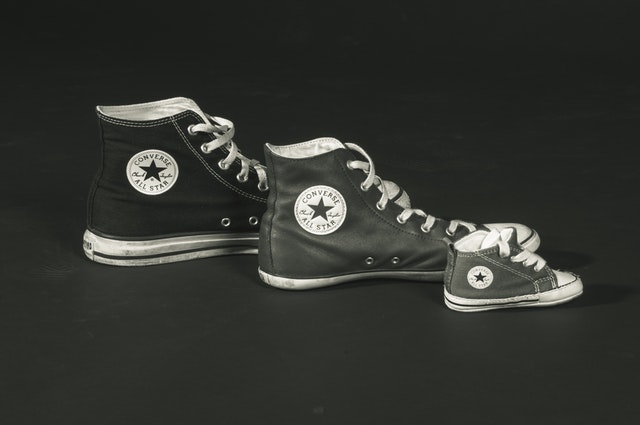3D Shoe printing
Additive manufacturing, as it is known technically, is speeding up prototyping designs and is also being used to produce customised and intricate items for sale. These range from false teeth, to jewellery, to parts for cars and aircrafts. 3D printing is not yet universally used. Normally, it is seen as too slow for mass production, too expensive for some applications and for others produces results not up to the required standard. But these shortcomings are being dealt with. It is not foolish to believe that 3D printing will power the factories of the future. Nor need the technology be restricted to making things from those industrial materials, plastic and metal. It is also effective at expanding manufacturing’s reach into biological matters.
Having new shoes that you will need to “break in” because they hurt your toes (or dealing with women’s wedges that constantly feel uncomfortable regardless of how long you wear them) will soon be a thing of the past thanks to 3D Printing.
The Background of 3D Printing
At first, the technology was utilized for rapid prototyping. However, over the past few  decades, rapid advances in “The Three Digital Accelerators;” processing capacity, storage, and bandwidth, have catapulted this technology into a tool for producing finished products which include not only women’s shoes, but also jewelry, dresses, car dashboards, parts for jet engines, jawbones for individuals, replacement components for synthesizers, and even more.
decades, rapid advances in “The Three Digital Accelerators;” processing capacity, storage, and bandwidth, have catapulted this technology into a tool for producing finished products which include not only women’s shoes, but also jewelry, dresses, car dashboards, parts for jet engines, jawbones for individuals, replacement components for synthesizers, and even more.
When people first hear that you could produce something by printing it, they have a hard time imagining it. Consider it this way: 3D printers build things by simply setting material, typically metal or plastic, layer by layer, until the model or final item is completed. When the layout is downloaded into the printer, then a laser produces a coating of material and fuses it.
3D printers may range from the size of a microwave oven to the magnitude of a car. A printer that can print a home by depositing cement, layer upon layer using a printer the size of a tractor-trailer, is currently in development. Prices for 3D printers range from kits for under $1,000 to over $100,000 for industrial variations.
The Perfect Fit
3D printed shoes are so enticing for customers because the shoes are tailored for every person’s unique feet. Few people have toes that are indistinguishable. To put it differently, your left foot might be marginally wider or smaller than your right foot. Furthermore, since the current shoe sizing machine is limited to half-integer measurements (6, 6.5, 7, 7.5, etc.), it’s only taking into account how long a person’s feet are. Finding women’s pumps for narrow or wide feet is difficult. 3D Printing solves all of this.
With 3D Printing of shoe, instead of fitting box after box of pre-made shoes in standard sizes, customers get photos taken of the feet from several angles. This allows the computer to make an accurate 3D model of the individual’s feet. This info is then combined with information about the customer’s height, weight, and activities they engage in. After entering all the data, clients receive a personalized set of shoes tailored just for them.
A number of big corporation companies have started trialing the technology, however, it will still be some time before mass production gets underway. One method named Digital Light Synthesis can print things around ten times quicker compared to other 3D printers. The distinction is that rather than printing an object layer by layer from the surface down like conventional additive 3D printers perform, Carbon’s procedure is constant and begins from the base.
T he liquid resin material also allows for a much more elastic final product when compared with the substance utilized by conventional 3D printers. Carbon machines utilize digital lighting under the printing surface to flip the liquid resin into a solid item. Following the midsole is published it is attached to the Peak of the shoe, which Consists of cloth using conventional manufacturing methods.
he liquid resin material also allows for a much more elastic final product when compared with the substance utilized by conventional 3D printers. Carbon machines utilize digital lighting under the printing surface to flip the liquid resin into a solid item. Following the midsole is published it is attached to the Peak of the shoe, which Consists of cloth using conventional manufacturing methods.
While the majority of men’s and women’s shoes offered now are still made the traditional way, you can make certain that 3D printed sneakers will become more commonplace in the long run, along with a number of other 3D printed products you will use every day. 3D Printing is progressing quickly on a worldwide level and provides something that up until recently was hopeless: On-demand, anytime, anywhere, by anybody manufacturing.
3D printing has the capability to create products when the customer orders them, instead of making them in several sizes and with piles of wasted material left over. 3D printing is viewed as a mutually beneficial endeavor for both the brand and customer. For the former, it’s the ability to dramatically cut back on waste and can also dramatically speed up the design process. For the latter, specificity to your requirements, with regard to size, fit and athletic discipline has the potential to be much more tailor-made.
